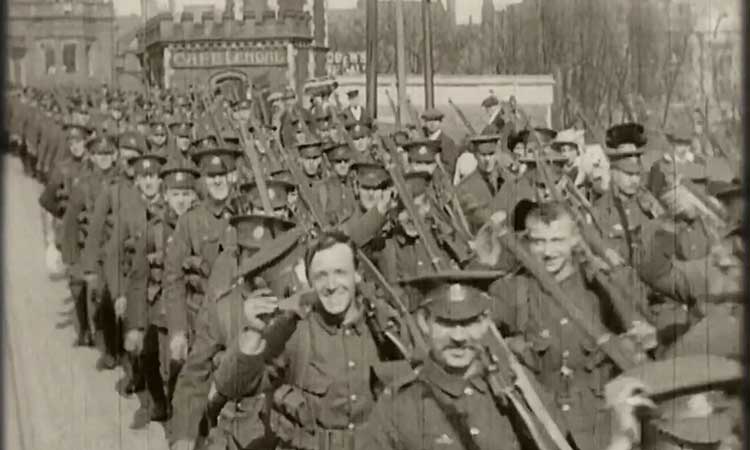August 3, 1914 was a warm Bank Holiday Monday in York. As families took a stroll by the river in the summer sunshine, they could not have imagined the hardship and heartache that the next four years would bring.
At 11pm that night, Britain declared war on Germany. Nothing would ever be the same.
This historic moment in the life of the city is captured in a new film, War Comes To York. Mixing contemporary film footage and remarkable stills it is a captivating portrayal of a city readying itself for war.
Put together for the York Castle Museum exhibition 1914: When The World Changed Forever, the film was created by video production company Digifish, based at Seaton Ross.
The museum’s curators and a team of youngsters from Poppleton Road School helped put the film together. As well as detailing ordinary life in the Edwardian era, it evokes the anxiety and excitement as war loomed.
With footage from the Yorkshire Film Archive, based at York St John University, the film records how soldiers garrisoned in the city were mobilised for the journey to Flanders. Many would not return.


War Comes To York also examines the divided city. At this time more than a quarter of its 82,000 residents live impoverished lives in the slums of Hungate, Walmgate and Layerthorpe.
The workhouse on Huntington Road is still the last resort of the poor.
By contrast, the well off citizens live in the villas of Bootham and The Mount.
This was a city where the railways and chocolate factories provided jobs for those in the working class not employed in domestic service.
At the end of a long shift, many would go to the pub. At this time, there were 23 of them in a 400-yard stretch of Walmgate.
Other evening entertainment included variety at the Opera House, and films at the new Fossgate Electric Theatre.
But the most heart-rending moment of all is seeing the cheerful faces of the young men in army uniform as they march over Lendal Bridge, having no idea what horrors await them.
